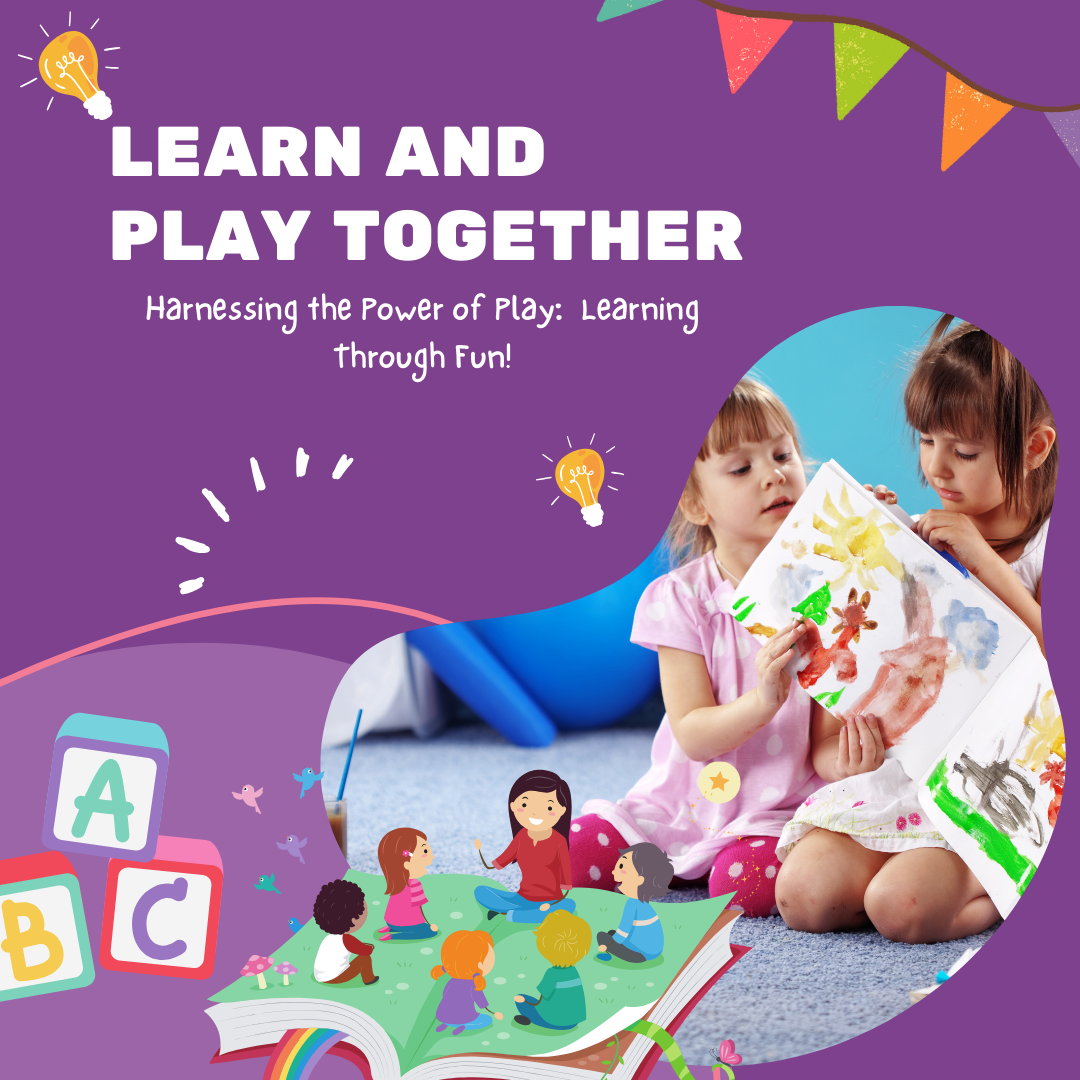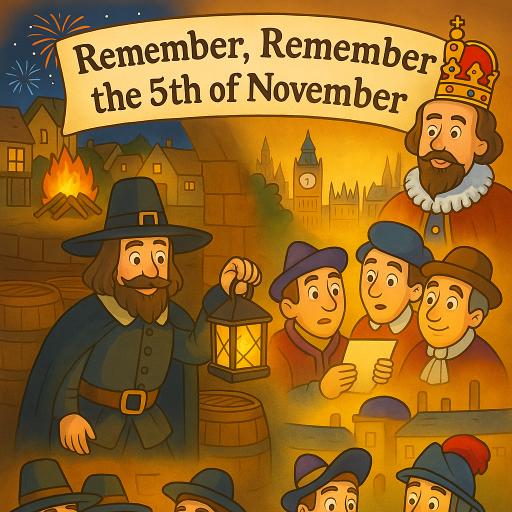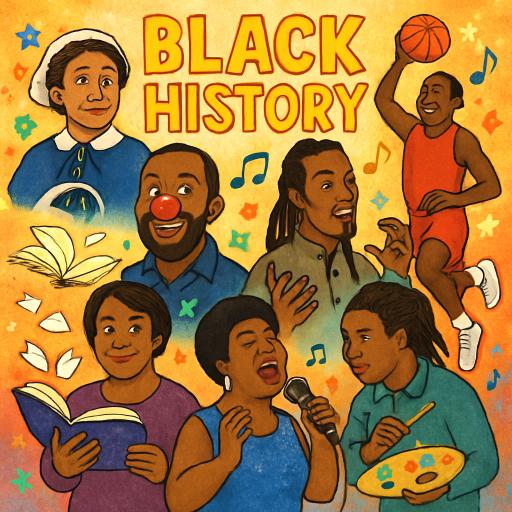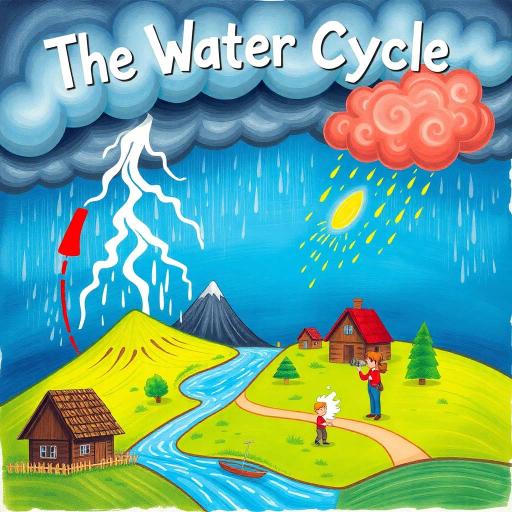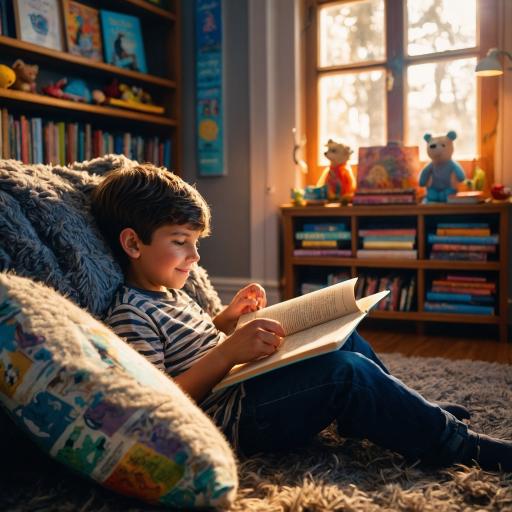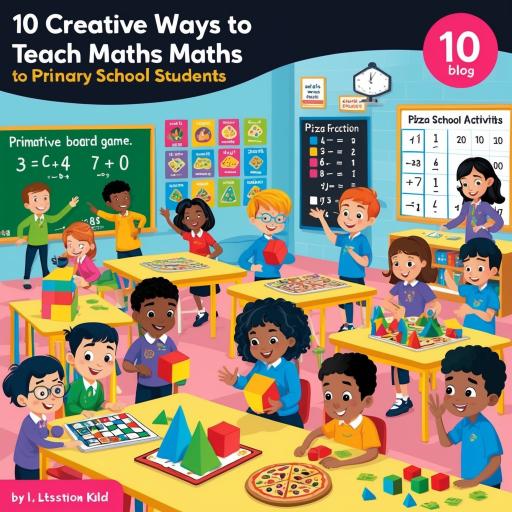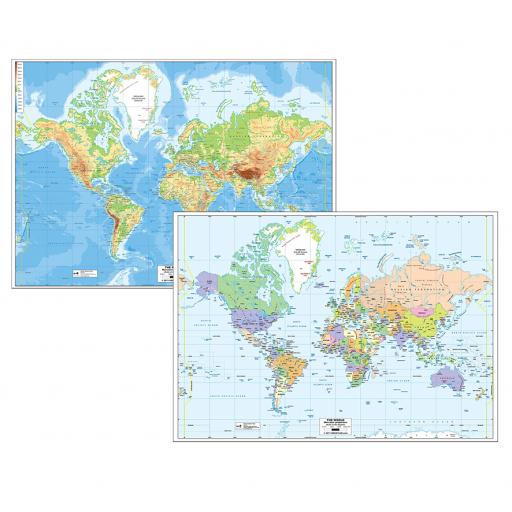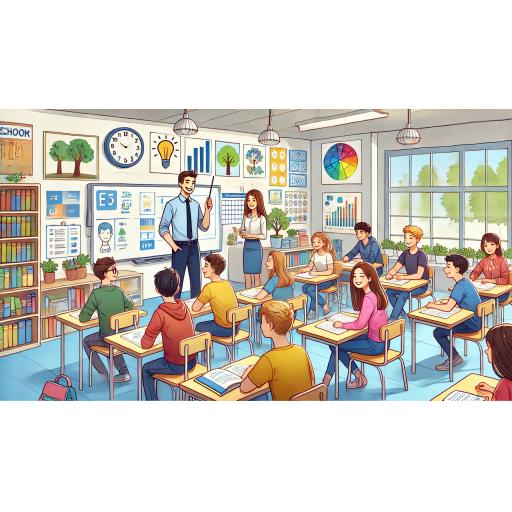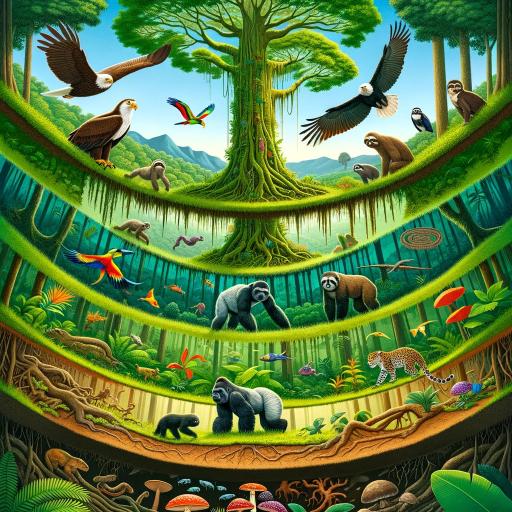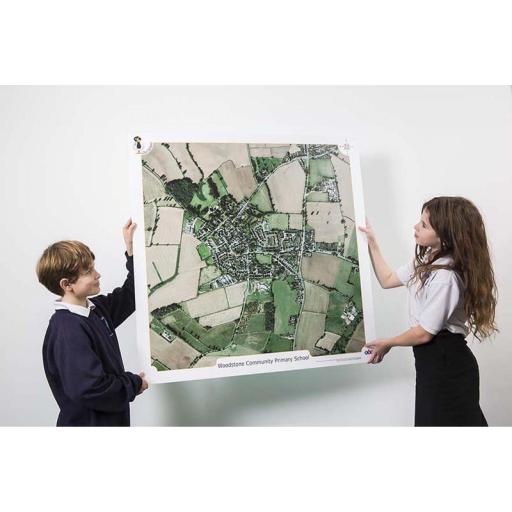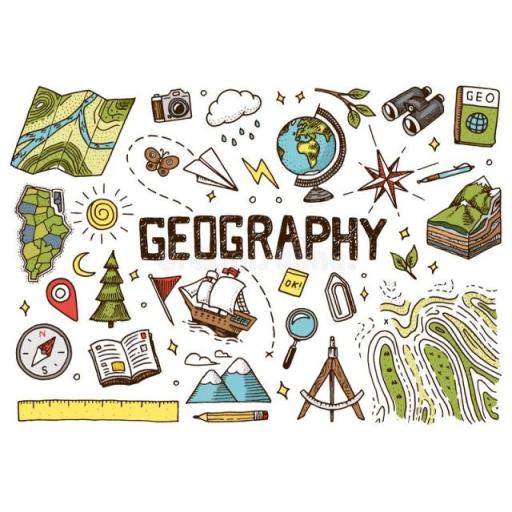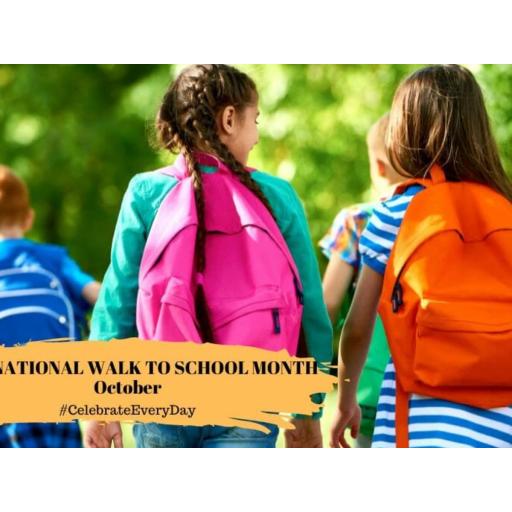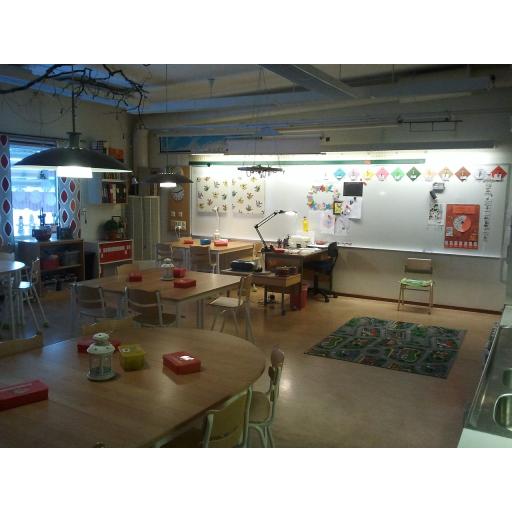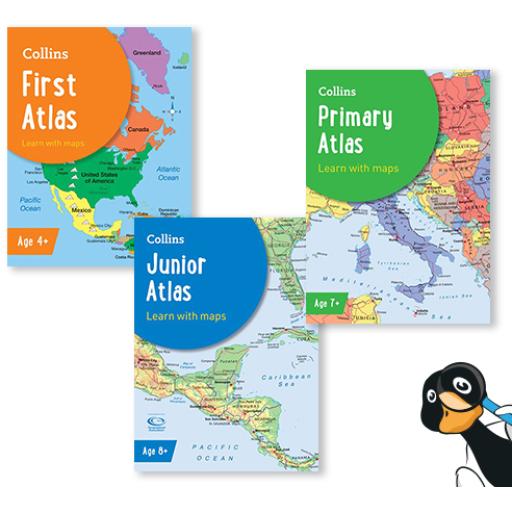Remember those carefree school days when recess reigned supreme? Little did we know, amidst the laughter and carefree chases, we were wielding a hidden superpower: Play. This wasn't just an escape from multiplication tables; it was a dynamic learning catalyst, shaping our minds with each giggle and block tower built. Play, it turns out, is a cognitive powerhouse waiting to be harnessed in the classroom.
Beyond a mere break from academics, play ignites crucial brainpower. It sparks creativity, letting imaginations run wild in pretend worlds and colorful creations. This creative fire doesn't stay confined to play's playground; it spills over, fostering innovative thinking and fresh problem-solving approaches. Play also throws down challenges, turning children into mini-Sherlock Holmeses, deciphering puzzles, strategising games, and navigating imaginary terrain. Each obstacle conquered hones their problem-solving skills, equipping them for academic hurdles and real-life complexities.
But play isn't just about quick thinking; it nurtures critical minds. In every decision made during a game, every plan hatched to build the mightiest fort, children refine their ability to analyse, evaluate, and choose wisely. This critical thinking muscle, strengthened through playful adventures, empowers them to approach learning with discerning, analytical lenses.
Play is, moreover, an invitation to explore. Tiny hands manipulate objects, test hypotheses, and build worlds anew, laying the groundwork for understanding abstract concepts and complex subjects. Building with blocks isn't just fun; it's a playground for learning about balance, symmetry, and spatial relationships, all without cracking a textbook.
Finally, play isn't just an escape; it's a bridge. As children dive into playful scenarios, they weave the threads of knowledge learned into the tapestry of experience. Whether reenacting historical events, tinkering with scientific wonders, or embarking on educational quests, play transforms theoretical concepts into tangible realities, solidifying understanding and making learning an unforgettable adventure.
So, let's celebrate this cognitive superpower! By recognising play's potential as a dynamic learning tool, educators and parents can empower children to not only excel academically but also develop the cognitive muscles necessary for a lifetime of joyful, engaged learning. Remember, the playground isn't just a place for swings and laughter; it's a fertile learning ground where minds blossom and knowledge takes flight. Let's release the magic of play and watch our children become not just students, but explorers, creators, and critical thinkers, armed with the superpower of playful learning.
Incorporating Play into Lesson Plans
The seamless integration of play into lesson plans is a skillful art that educators must master. Strategies such as thematic units, project-based learning, and gamified lessons offer educators avenues to infuse play into the curriculum while aligning with educational goals.
1. Thematic Play Stations
Imagine this: your classroom transformed into a bustling hub of themed learning stations. In one corner, a miniature Roman market erupts with bartering merchants and toga-clad citizens. Down the hall, a bustling rainforest echoes with the chatter of students researching exotic ecosystems. This, is the magic of thematic play stations!
Beyond Cardboard Castles:
Thematic play stations are more than just a fun diversion. They offer a potent cocktail of engagement, knowledge retention, and cross-curricular learning. By creating a fascinating environments that align with your curriculum, you're giving students a chance to:
- Live the textbook: History isn't just dates and names anymore. It's the thrill of a jousting tournament in a medieval castle, the intrigue of deciphering ancient Egyptian hieroglyphs, or the suspense of a Wild West showdown. Play stations bring history to life, encouraging students to step into the shoes of historical figures and grapple with real-world scenarios.
- Dive into STEM: Science isn't confined to dusty textbooks. It's the bubbling mystery of a volcanic eruption recreated in a baking soda and vinegar experiment, the awe-inspiring construction of a miniature solar system, or the collaborative challenge of building a sturdy bridge with toothpicks and marshmallows. Play stations turn abstract concepts into tangible experiences, igniting curiosity and a love for exploration.
- Craft compelling narratives: Language arts isn't just grammar drills. It's the joy of crafting a thrilling pirate adventure, the collaborative storytelling of a fantastical creature saga, or the expressive power of writing through the eyes of a historical figure. Play stations tap into students' imaginations, fostering creativity, communication, and critical thinking skills.
Ready to Set Sail? Inspiring Station Ideas:
- Journey Through Time: Build an Egyptian tomb for students to excavate, set up a medieval marketplace with costumes and props, or create a futuristic space station for them to explore.
- Explore the Wonders of Science: Design a mini-pond ecosystem, assemble a working model of the solar system, or host a mini-Olympics with cardboard chariots and paper airplanes.
- Unleash Literary Adventures: Construct a pirate ship deck with treasure maps and telescopes, create a cosy reading nook for collaborative storytelling, or set up a character creation station for imaginative writing exercises.
Remember:
- Align with your curriculum: Let the stations reinforce key learning objectives.
- Incorporate hands-on activities: Encourage experiments, building, and exploration.
- Foster collaboration: Design activities for group work and communication.
- Embrace creativity: Let students personalize their experiences and bring their own ideas to the table.
Thematic play stations aren't just about fleeting fun; they're a springboard for deep learning, lasting memories, and a lifelong love of exploration. So, set sail, build your stations, and watch your classroom transform into a wonderland of discovery!
Unshackling the Fun in Learning: A Dive into Educational Games
Remember the thrill of winning a board game or the satisfaction of solving a challenging puzzle? Now, imagine turning that excitement into a powerful tool for learning! Educational games are more than just classroom entertainment – they're brain-boosting bonanzas that disguise learning as adventure. Get ready to ditch the worksheets and dive into a world where multiplication tables become treasure maps and grammar practice turns into a space opera!
Games Like Learning Candy:
Educational games offer a delicious blend of engagement, skill-building, and sheer fun. They tap into children's natural desire to play and explore, transforming abstract concepts into exciting challenges. The benefits are undeniable:
- Memory Masters: Studies show students learn and retain information up to 40% better through game-based learning. The immersive nature of games solidifies concepts and creates long-lasting memories.
- Problem-Solving Pirates: Games are battlegrounds for the brain! Solving puzzles, navigating mazes, and strategising to win hone critical thinking skills, analytical abilities, and creative problem-solving.
- Teamwork Champions: Collaboration is key in many games, encouraging communication, negotiation, and the ability to work towards a shared goal. These are essential skills for navigating not just classrooms but also future career paths and personal relationships.
A Universe of Game-tastic Ideas:
From board games to digital adventures, the world of educational games is bursting with potential. Here are some inspiring examples to get you started:
- Math Mayhem: Instead of rote memorisation, turn multiplication tables into a treasure hunt with a game where solving problems unlocks clues to hidden maps and buried loot.
- Linguistic Lingo Loops: Grammar practice can be a drag, but a competitive word building game or a collaborative story creation activity can transform complex rules into thrilling adventures.
- Science Showdown: Let students become mad scientists in a chemistry experiment board game, embark on a virtual field trip to explore different ecosystems, or build bridges and catapults to learn about physics in a hands-on challenge.
Remember:
- Match the game to the age and skill level of your students.
- Focus on clear learning objectives. Choose games that align with your curriculum goals.
- Incorporate variety. Keep things fresh with different types of games to cater to diverse learning styles and interests.
- Let students take the lead. Encourage them to choose games, suggest modifications, and even create their own!
Educational games aren't just about filling time; they're about sparking curiosity, igniting critical thinking, and making learning an unforgettable adventure. So, roll the dice, shuffle the cards, and watch your classroom transform into a playground of playful learning!
Releasing the Classroom Walls: A Deep Dive into Outdoor Learning Spaces
Imagine this: the hum of bees replaces the buzz of fluorescent lights, the scent of blooming roses fills the air instead of stale paper, and laughter echoes across a vibrant green playground. This is the magic of outdoor learning spaces – a transformative escape from the classroom that engages the young in a whole new way.
Beyond Brick and Mortar:
Outdoor learning spaces aren't just add-ons; they're extensions of the curriculum, offering a range of benefits:
- Nature's Classroom: A garden becomes a living biology lab, teeming with insects, sprouting plants, and whispering secrets about ecosystems. An open field transforms into a physics playground, ideal for testing the theories of motion and gravity. The sky unfolds as a boundless astronomy lab, inviting students to gaze at constellations and ponder the cosmos.
- Active Minds, Active Bodies: Forget the confines of desks; outdoor spaces encourage movement, exploration, and hands-on learning. Building a vegetable patch nurtures teamwork and responsibility, while playing tag in the open field ignites physical activity and social skills.
- Sensory Oasis: The sights, sounds, and smells of nature soothe the soul and stimulate the senses. Outdoor learning provides a welcome escape from the sensory overload of screens and classrooms, promoting mindfulness and a connection to the natural world.
Let's Build a Nature Wonderland:
From tiny pocket gardens to sprawling science parks, the possibilities are endless. Here are some inspiring ideas to get you started:
- The Green Thumb Haven: Create a garden with designated areas for planting vegetables, studying insects, and observing bird behavior. Include raised beds, composting bins, and rainwater harvesting systems for an immersive experience in sustainability.
- The Movement & Play Zone: Design an open space for physical activities like tag, obstacle courses, and team sports. Incorporate climbing structures, balance beams, and even a mini-track for bikes or scooters.
- The Science Playground: Build interactive installations like a sundial to learn about timekeeping, a weather station to monitor rain and temperature, or a mini-pond ecosystem for hands-on exploration of environmental science.
Remember:
- Plan spaces that align with your curriculum. Make the outdoor learning areas extensions of your lessons, offering practical and engaging opportunities for exploration.
- Incorporate different learning styles. Cater to visual, auditory, and kinesthetic learners by offering a variety of activities and sensory experiences.
- Safety first! Ensure all installations are age-appropriate and well-maintained. Consider shade, accessibility, and emergency procedures.
- Get the community involved! Partner with parents, environmental organizations, and local businesses to design, build, and maintain your outdoor learning spaces.
Outdoor learning spaces are more than just playgrounds; they're launchpads for curiosity, wonder, and lifelong learning. So, open the doors, step into the sunshine, and watch your students blossom under the endless sky!
Stepping into Shoes, Solving Problems: The Power of Role-Playing Simulations
Imagine history coming alive as your students transform into Roman gladiators wielding foam swords, or science exploding into action as they don lab coats and conduct mock experiments. This is the magic of role-playing simulations: stepping into the shoes of others and tackling real-world challenges within the safe confines of the classroom. It's not just about dressing up (although costumes can be fun!), it's about immersive learning that ignites creativity, boosts comprehension, and teaches valuable life skills.
Beyond Textbooks and Tests:
Role-playing simulations offer a potent cocktail of engagement, critical thinking, and social-emotional learning:
-
Stepping into the Story: By inhabiting the roles of historical figures, literary characters, or scientific pioneers, students gain a deeper understanding of their motivations, challenges, and perspectives. It's history on steroids, literature leaped right off the page, and science that sparks with hands-on exploration.
-
Problem-Solving Powerhouse: Simulations throw students into realistic scenarios, requiring them to think critically, collaborate, and overcome obstacles. Whether it's navigating a political debate as historical leaders, conducting a mock trial in law class, or designing a sustainable city in environmental science, these experiences hone problem-solving skills and build resilience.
-
Emotional Intelligence Boost: Stepping into another's shoes fosters empathy, communication skills, and conflict resolution. As students grapple with diverse perspectives and navigate social interactions within the simulation, they develop emotional intelligence – a crucial skill for academic success and future careers.
A Universe of Simulation Ideas:
From ancient Rome to outer space, the possibilities are endless! Here are some inspiring examples to get you started:
- History in Action: Have students reenact key historical events like the signing of the Declaration of Independence or the fall of the Berlin Wall. This not only brings history to life but also encourages debate and critical thinking about different perspectives.
- Literary Lives: Involve students in their favourite novels by having them act out scenes, write from the characters' perspectives, or even create their own sequels. This deepens comprehension and fosters creativity.
- Science Playground: Transform your classroom into a laboratory of discovery with mock experiments, scientific debates, and role-playing scenarios like solving environmental challenges or designing futuristic inventions.
Remember:
- Align simulations with your curriculum objectives. Make sure the scenarios reinforce key learning goals and offer opportunities to practice crucial skills.
- Create clear roles and expectations. Set guidelines for behavior, communication, and problem-solving within the simulation.
- Encourage creativity and improvisation. Let students bring their own ideas and interpretations to the roles they play.
- Reflect and debrief after the simulation. Use the experience to discuss key takeaways, challenges faced, and lessons learned.
Role-playing simulations aren't just classroom entertainment; they're mind-bending journeys that make learning an unforgettable experience. So, open the curtains, set the stage, and watch your students step into a world of possibility!
P.S. Don't forget to take pictures or videos of your students in action during simulations! These can be used for reflection, documentation, and even sharing with parents or the wider community.
I hope this provides more information and examples to make your blog post even more engaging!
The Words into Worlds: The Magic of Storytelling and Creative Writing
Picture this: your classroom not as a room of desks and textbooks, but as a portal to vibrant imaginations. Pens become wands, pencils morph into paintbrushes, and words dance into fantastical tales. This is the enchanting realm of storytelling and creative writing, where play meets language, and learning takes flight on wings of wonder.
Beyond Grammar Drills:
Storytelling and creative writing aren't just about filling time; they're powerful tools that:
- Language Masters: Weaving stories and crafting prose strengthens vocabulary, refines grammar, and boosts comprehension. Children learn to wield words like sorcerers, casting spells of description, crafting enthralling dialogue, and building suspenseful narratives.
- Creativity Champions: These activities release imagination, encouraging students to explore fantastical worlds, invent outlandish characters, and paint their emotions with vibrant language. Creativity becomes a muscle that flexes with every story, pushing the boundaries of thought and expression.
- Self-Expression Superheroes: Storytelling allows children to explore their own voices, perspectives, and emotions. Through fictional characters, they navigate complex feelings, grapple with real-world challenges, and discover the power of self-expression.
A Universe of Story-Spinning Ideas:
The possibilities are as endless as the stars! Here are some inspiring ways to ignite the stories within your students:
- Storytelling Sprints: Set a timer and let imaginations run wild! Challenge students to write flash fiction pieces within a limited time, encouraging quick thinking, concise storytelling, and creative problem-solving.
- Character Constellations: Have students create intricate character profiles, complete with quirks, strengths, and backstories. Then, host a "character con" where students can mingle and interact as their creations, sparking impromptu stories and unexpected collaborations.
- Collaborative Chronicles: Let creativity take flight with a multi-chapter class story! Each student contributes a chapter, building upon the previous one to create a fantastical saga filled with unexpected twists and turns.
Remember:
- Embrace the mess: Creative writing isn't about perfection; it's about exploration and experimentation. Encourage students to take risks, make mistakes, and let their imaginations soar.
- Read aloud, celebrate voices: Share stories in the classroom, listen with enthusiasm, and offer positive feedback. Let students hear the power of their own voices and find inspiration in each other's creations.
- Connect to the curriculum: Weave storytelling and creative writing exercises into your lessons. Let historical figures write diary entries, science experiments unfold as thrilling narratives, or mathematical concepts be explored through fantastical journeys.
Storytelling and creative writing aren't just tools for language development; they're passports to endless universes of wonder. So, open the book of possibilities, set-free the words within, and watch your students transform into authors of their own amazing lives!
P.S. Don't forget to gather and preserve your students' creative works! Compile them into classroom anthologies, showcase them on a dedicated bulletin board, or even host a student-led reading night. Celebrating their creations is a powerful way to nurture their confidence and love for storytelling.
Innovation through Playful STEM Projects: Building, Coding, and Experimenting with Joy!
Forget dusty textbooks and dry lectures! STEM (Science, Technology, Engineering, and Mathematics) doesn't have to be a solemn affair. Inject a playful spark into your classroom with engaging projects that transform complex concepts into exhilarating adventures. Think colorful bricks morphing into towering structures, playful robots navigating mazes, and bubbling potions revealing scientific secrets – this is STEM powered by play!
Beyond Equations and Elements:
Playful STEM projects aren't just about fun; they unlock a treasure trove of benefits:
- Conceptual Grasp Champions: By building bridges with LEGO, programming robots to solve puzzles, or conducting hands-on experiments, students grasp abstract concepts in a tangible way. The physical manipulation and active engagement solidify understanding and create lasting memories.
- Innovation Instigators: Play fosters creativity and problem-solving skills. As students experiment, build, and tinker, they learn to think outside the box, troubleshoot challenges, and devise inventive solutions. This sparks a love for innovation and lays the foundation for future STEM superstars.
- Collaboration Connoisseurs: STEM projects often involve teamwork, encouraging communication, negotiation, and conflict resolution. Building intricate structures together, brainstorming coding solutions, or analyzing experimental results as a team strengthens social skills and promotes collaborative learning.
A Universe of Playful STEM Ideas:
From engineering feats to mind-bending coding adventures, the possibilities are endless! Here are some inspiring ways to bring play into your STEM curriculum:
- LEGO League Legends: Challenge students to design, build, and program robots that navigate obstacles and complete missions. This exciting competition blends engineering, coding, and teamwork, providing an unforgettable learning experience.
- Coding Capers: Don't let coding scare you! Introduce young minds to the world of programming through engaging games, interactive apps, and playful robots. They'll be writing code and controlling robots before you know it!
- Science Spectaculars: Transform your classroom into a laboratory of discovery! Conduct erupting volcano experiments, build mini solar systems, or design mini boats that race in homemade pools. Every bubbling concoction and zooming vessel reveals scientific principles in action.
Remember:
- Align projects with your curriculum goals. Make sure the activities reinforce key learning objectives and concepts.
- Embrace open-ended exploration. Encourage students to experiment, try different approaches, and come up with their own creative solutions.
- Focus on the process, not just the product. Celebrate the journey of learning through play, not just the final outcome.
- Make it accessible and inclusive. Adapt projects to cater to different learning styles and abilities, ensuring everyone can participate and feel included.
Playful STEM projects aren't just classroom entertainment; they're playgrounds for innovation, collaboration, and a lifelong love for learning. So, ditch the dry drills and dive into the world of playful exploration! Watch your students become architects of their own learning, engineers of tomorrow, and scientists fueled by curiosity and wonder!
P.S. Remember to document your students' playful STEM adventures! Take pictures, videos, and collect student reflections. These can be used to showcase their learning, celebrate their achievements, and inspire others to bring play into their classrooms.
Creativity in the Classroom: Art & Craft Activities across the Curriculum
Let's explore how Art & Craft activities can transform your classroom into a vibrant playground for all subjects, catering to diverse learning styles and igniting that spark of curiosity in every student.
History Unfolded in Craft Creations:
-
Visual Timelines: Instead of dry dates and names, students can stitch together vibrant fabric timelines, build 3D pop-up models of key events, or design graphic novels narrating historical journeys.
-
Living Museums: Transform your classroom into a mini-museum! Students can sculpt replicas of ancient pottery, weave tapestries depicting cultural traditions, or even craft costumes and stage historical reenactments.
-
Creative Biographies: Encourage students to step into the shoes of historical figures through art journaling, writing fictional letters from their perspective, or designing portraits that capture their essence.
Science Sparks Through Sensory Exploration:
-
Building Models: From erupting volcanoes made with baking soda and vinegar to intricate DNA models crafted from pipe cleaners, hands-on construction activities bring scientific concepts to life.
-
Mixed-Media Marvels: Let artistic expression merge with scientific exploration! Students can create watercolor paintings to depict ecosystems, design clay sculptures of animal cells, or use recycled materials to build miniature solar-powered vehicles.
-
Artful Experiments: Turn science labs into art studios! Conduct color-changing chemical reactions that inspire vibrant paintings, use chromatography techniques to create artistic separation of pigments, or explore light refraction through kaleidoscopes students build themselves.
Language Arts Dances with Expression:
-
Literary Landscapes: Paint scenes from beloved novels, sculpt characters from poems, or even design and build miniature sets inspired by favorite stories. These activities bring literature to life and deepen comprehension.
-
Poetry in Motion: Turn poems into dance performances, create comic strips that visually narrate short stories, or write and illustrate their own picture books. These activities encourage creative expression and enhance communication skills.
-
Interactive Journals: Let students express their understanding of literary concepts through visual storytelling. Create personalized journals for character analysis, mood exploration, or creative writing exercises that go beyond traditional assignments.
Remember:
- Align activities with curriculum objectives. Ensure your art and craft projects reinforce key learning goals and concepts.
- Celebrate diverse creative expressions. Encourage experimentation, individuality, and a variety of approaches to each project.
- Make it multisensory. Incorporate touch, sight, sound, and even movement into your activities to cater to different learning styles.
- Turn mistakes into opportunities. Embrace the messiness of creativity and use it as a springboard for exploration and problem-solving.
By integrating art and craft activities into your curriculum, you're not just adding a splash of color, you're opening doors to deeper understanding, richer connections, and a lifelong love for learning. So, grab your paintbrushes, clay, and imagination, and let's transform your classroom into a vibrant studio where every subject sparks the magic of creativity!
P.S. Don't forget to share student creations! Showcase their artwork, stage theatrical performances, or even organize a school-wide art exhibition. Seeing their work appreciated boosts confidence and inspires others to embrace the power of artistic expression.
Imagination and Learning: The Power of Dramatic Play Centers
Remember the thrill of transforming an old blanket into a superhero cape or a cardboard box into a spaceship? Play isn't just about fun; it's a powerful tool for learning and development. In this sense, dramatic play centers become more than just corners filled with props – they transform into vibrant learning landscapes where imagination soars and academic concepts take flight.
Imagine stepping into:
- A bustling marketplace center: Students become vendors hawking fruits and vegetables, learning about supply and demand while practicing social skills like negotiation and persuasion. This economics lesson isn't confined to textbooks; it's brought to life through bartering, haggling, and even creating colorful advertisements.
- A bustling 'space exploration' center: Cardboard boxes become spaceships, costumes morph into astronaut suits, and the classroom floor transforms into the lunar surface. Through role-playing missions, conducting simulated experiments, and collaborating to solve "alien" problems, students delve into the wonders of science and discover the power of teamwork.
But the benefits of dramatic play centers extend far beyond academic reinforcement:
- Social and Emotional Development: These centers offer safe spaces for students to practice social skills like communication, collaboration, and conflict resolution. They learn to take on different roles, empathise with others, and navigate social dynamics in a playful environment.
- Language and Literacy Boost: Pretend play encourages storytelling, imaginative dialogue, and even the creation of narratives and scripts. As they create scenarios and interact with each other, students strengthen their vocabulary, refine their communication skills, and gain confidence in expressing themselves.
- Creativity and Problem-Solving: From designing spaceships to crafting costumes, dramatic play centers ignite creativity and resourcefulness. Students learn to think outside the box, solve problems using available materials, and adapt their plans when unexpected challenges arise.
Remember:
- Theme alignment: Make sure the themes of your play centers align with your curriculum objectives and provide opportunities to reinforce key learning concepts.
- Open-ended exploration: Encourage creativity and imagination by providing a variety of props, materials, and prompts, but avoid overly scripted scenarios.
- Student ownership: Involve students in the creation and maintenance of their play centers. This fosters ownership and a sense of responsibility for their learning environment.
- Reflection and discussion: After playtime, take time to reflect on the experiences. Encourage students to share their stories, discuss what they learned, and connect their play to academic concepts.
Dramatic play centers aren't just additions to your classroom; they're invitations to adventure, laboratories for learning, and fertile grounds for personal growth. So, open the doors to imagination, set the stage for exploration, and watch your students transform into astronauts, entrepreneurs, and creators, all equipped with the powerful tools of dramatic play.
P.S. Don't forget to document the magic! Take pictures and videos of students engaged in their play centers, share their stories on school newsletters or social media, and celebrate the joy of learning that blossoms through imagination.
Music and Movement: Unlocking Learning with Every Beat and Every Step
Forget the dusty desks and droning lectures – let's inject the classroom with rhythm and motion! By incorporating music and movement activities into your daily routine, you're not just adding a fun break; you're harnessing a powerful learning tool that engages minds, stimulates memory, and transforms the educational experience.
Imagine the scene:
- Multiplication tables become rhythmic chants: Children tap their feet and clap their hands, chanting math facts with newfound enthusiasm. This kinesthetic approach not only makes learning fun but also strengthens neural connections, solidifying memory and making those pesky tables practically stick!
- Historical events come alive through dance: Students morph into explorers traversing uncharted territories, soldiers marching to the beat of a drum, or ballerinas swirling in the gowns of bygone eras. These embodied experiences not only paint a vivid picture of history but also foster empathy and understanding of different cultures and time periods.
But the benefits of music and movement go beyond academic gains:
- Enhanced Engagement: Physical activity increases blood flow to the brain, boosting focus and attention. Suddenly, even complex concepts become captivating adventures when students are actively involved.
- Memory Stimulation: Movement and music create sensory pathways for learning, enhancing the retention of information. Chanting facts, dancing through historical narratives, and acting out scientific processes – these experiences embed learning in a way that goes beyond rote memorization.
- Diverse Learning Styles: Not everyone learns best by staring at textbooks. Music and movement cater to kinesthetic, auditory, and visual learners, ensuring everyone has a fun and effective way to engage with the material.
- Breaking the Monotony: Traditional classroom routines can get repetitive. Injecting a burst of music and movement into the day provides a welcome break, refreshes energy levels, and reignites the spark of curiosity in students.
Remember:
- Alignment with curriculum: Choose music and movement activities that reinforce learning objectives and concepts. Let the rhythm guide the math lesson, the dance steps narrate the historical event, and the melody unlock the wonders of science.
- Creativity is key: Don't be afraid to experiment! Create your own chants, design dances inspired by the subject matter, and encourage students to contribute their own ideas. The more ownership they have, the more engaged they'll be.
- Accessibility matters: Ensure activities are inclusive and cater to different abilities. Adapt movements, offer alternative ways to participate, and celebrate the unique ways everyone can express themselves through music and movement.
Music and movement aren't just add-ons to your curriculum; they're an integral part of creating a dynamic learning environment. By infusing your lessons with rhythm and motion, you're not just teaching – you're igniting imaginations, stimulating minds, and creating unforgettable learning experiences. So, crank up the tunes, turn the classroom into a dance floor, and watch your students transform into engaged learners, ready to conquer any academic challenge with every beat and every step!
Don't hesitate to share the joy! Capture the energy of your music and movement activities with photos or videos. Showcase them on school platforms, share them with parents, and let the world witness the magic that unfolds when learning dances to its own tune.
Remember, play-based learning isn't just about fun; it's about helping bring out the full potential of every student. By embracing creative strategies like dramatic play centers, music and movement activities, and all the other wonders of playful learning, you're not just educating, you're inspiring a lifelong love of knowledge and discovery. Let's create classrooms where laughter echoes alongside learning, where curiosity takes center stage, and where every lesson is an invitation to play, explore, and grow!
Success Stories of Play-Based Learning
-
Reggio Emilia Approach in Italy
In the town of Reggio Emilia, Italy, an innovative approach to early childhood education has gained international acclaim. The Reggio Emilia approach emphasises child-led, play-based learning. Classrooms are designed to be open and flexible, encouraging exploration and collaboration. Reports from schools following this approach consistently note increased student engagement, improved social skills, and a love for learning from an early age.
-
HighScope Perry Preschool Project in the United States
The HighScope Perry Preschool Project, a landmark study conducted in the 1960s in Ypsilanti, Michigan, demonstrated the long-term benefits of play-based early education. The project involved a group of economically disadvantaged children who received a high-quality preschool education highlighting active, hands-on learning through play. Decades later, participants showed higher academic achievement, increased employment rates, and lower rates of criminal activity compared to a control group, manintaining the enduring positive impact of play-based early education.
-
Forest Schools in Scandinavia
Forest schools, prevalent in Scandinavian countries like Sweden and Denmark, take education out of traditional classrooms and into nature. Children engage in outdoor play, exploration, and hands-on learning amidst natural settings. Reports from these schools indicate heightened creativity, improved focus, and a strong connection to the environment. The success of the forest school model has led to its adoption in various parts of the world, accentuating the universal benefits of play in diverse settings.
-
Montessori Education Worldwide
The Montessori method, developed by Maria Montessori, is renowned for its emphasis on self-directed, hands-on learning. Montessori schools worldwide consistently report positive outcomes, including increased independence, enhanced problem-solving skills, and a joy for learning. The student-centered, play-based approach fosters a love for exploration and discovery, creating a foundation for lifelong learning.
-
Playful Learning in Finland
Finland's education system, often lauded for its success, incorporates play throughout the early years. Playful learning is an integral part of Finnish education, contributing to the country's consistently high ranking in international education assessments. Finnish students are known for their well-rounded skills, creativity, and positive attitudes towards learning, showcasing the effectiveness of play-based approaches.
-
Project-Based Learning in High Schools
In high schools adopting project-based learning, students engage in hands-on, collaborative projects that integrate multiple subjects. This approach not only enhances academic performance but also develops critical thinking, problem-solving, and teamwork skills. Success stories highlight improved student motivation, a deeper understanding of complex concepts, and a smoother transition to higher education or the workforce.
These success stories collectively indicate the multifaceted benefits of play-based learning. From improved academic performance to enhanced social skills and a positive attitude towards learning, the evidence is clear: play has a transformative impact on the educational landscape. Schools and educators embracing play as a core element of their teaching philosophy consistently witness the profound and lasting effects on student development and success.
Conclusion
By acknowledging and wholeheartedly embracing the diverse advantages of play-based learning, educators lay the foundation for dynamic and immersive educational environments. These environments not only foster academic excellence but also nurture the holistic development of students. The ripple effect of play extends beyond traditional teaching methods, creating a vibrant and enriching tapestry of learning experiences that empower students to thrive academically, socially, and creatively. As we recognise the undeniable impact of play on education, we embark on a journey towards a future where classrooms are not just spaces of instruction but vibrant hubs of inspiration, curiosity, and lifelong learning.
FAQs
-
Is play-based learning suitable for all age groups?
- Yes, play-based learning can be adapted for various age groups, from early childhood to higher education, with age-appropriate activities.
-
How can educators convince skeptics about the effectiveness of play in education?
- Educators can present research findings, success stories, and practical outcomes to demonstrate the positive impact of play on learning.
-
What role do parents play in supporting play-based learning at home?
- Parents can encourage play, provide resources, and understand the educational value of play in promoting their child's overall development.
-
Are there specific technologies recommended for integrating into play-based education?
- While there's no one-size-fits-all answer, educators should consider age-appropriate digital tools that enhance the learning experience without overshadowing hands-on play.
-
How can schools measure the success of play-based learning programs?
- Schools can adopt alternative assessment methods such as project evaluations and reflective journals to capture the multifaceted outcomes of play-based education

